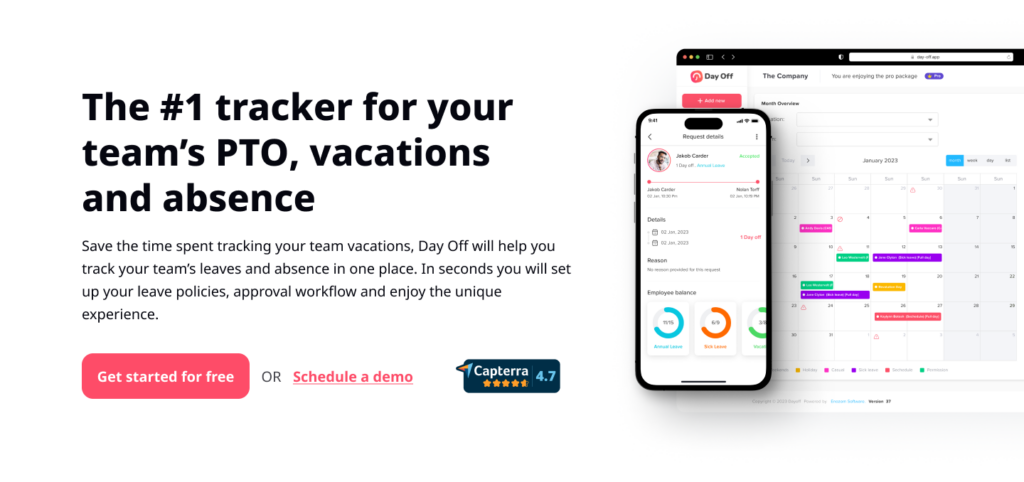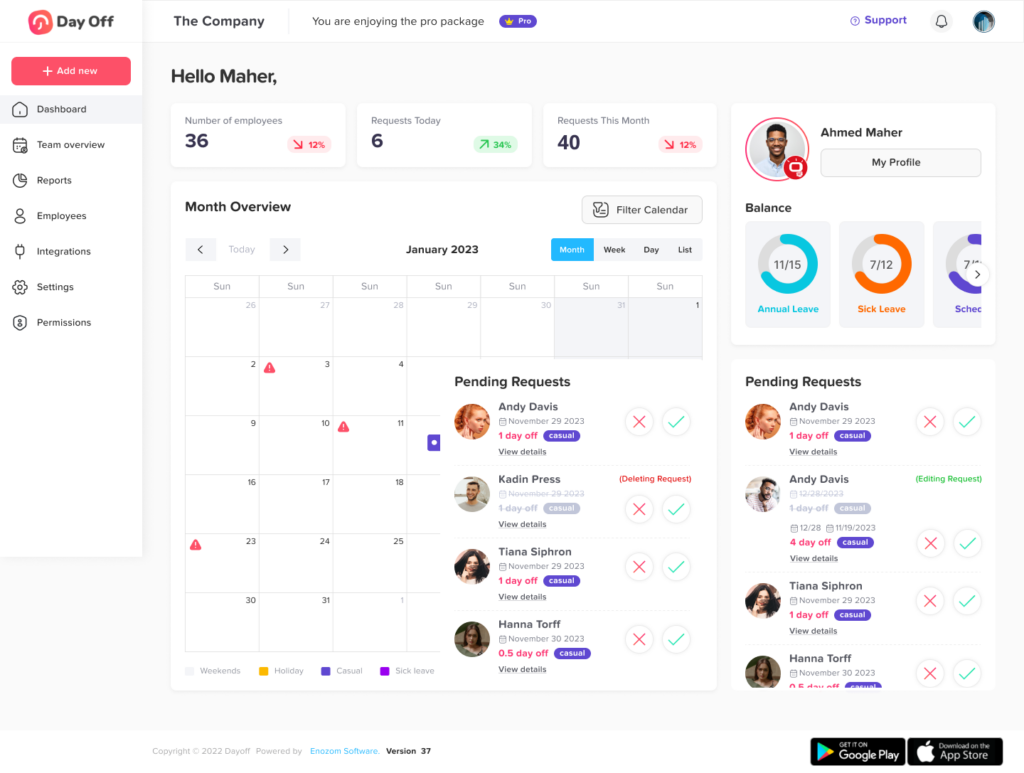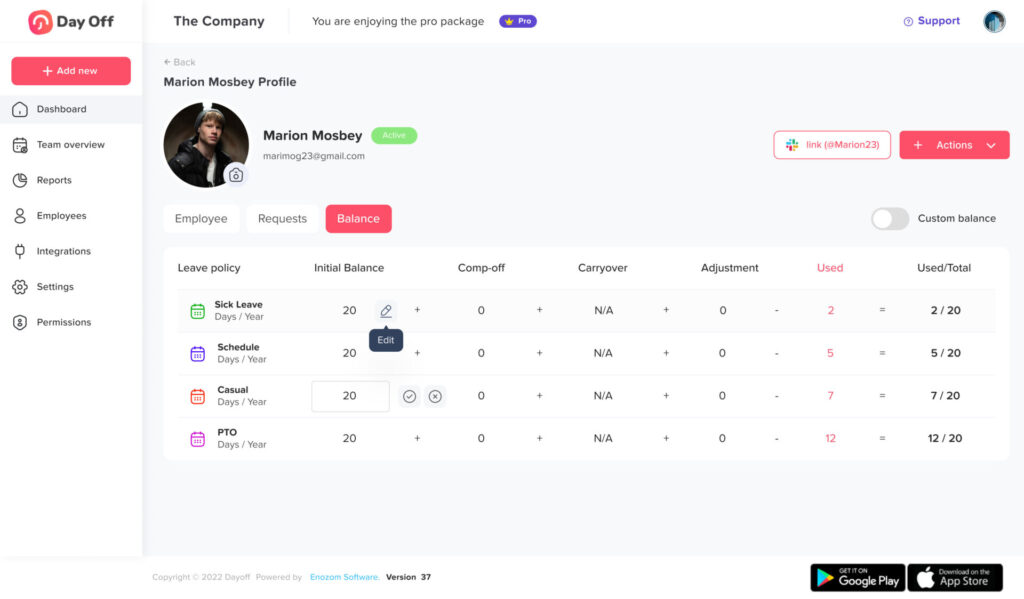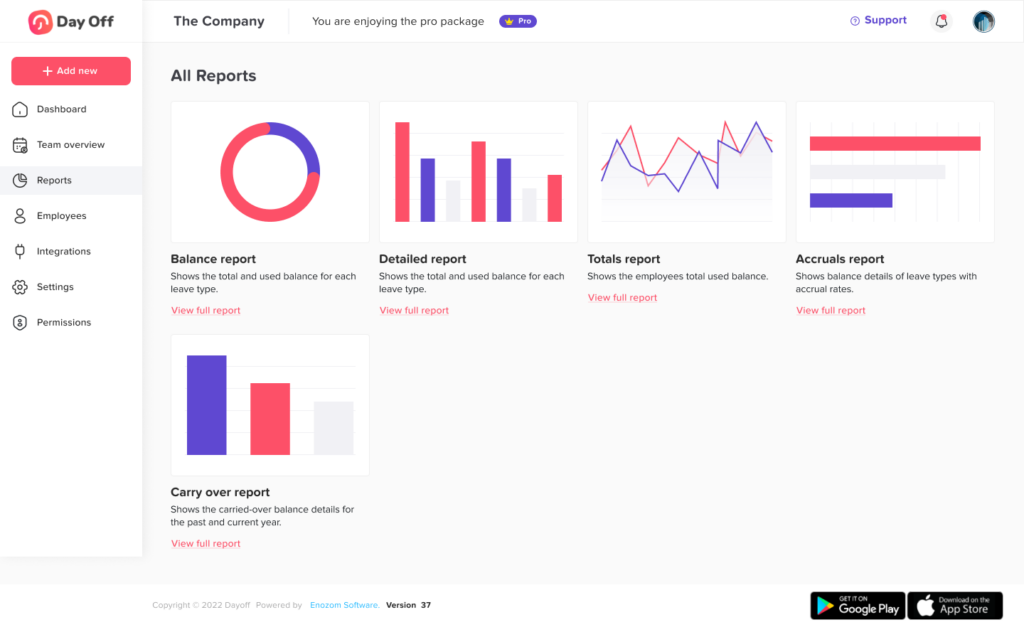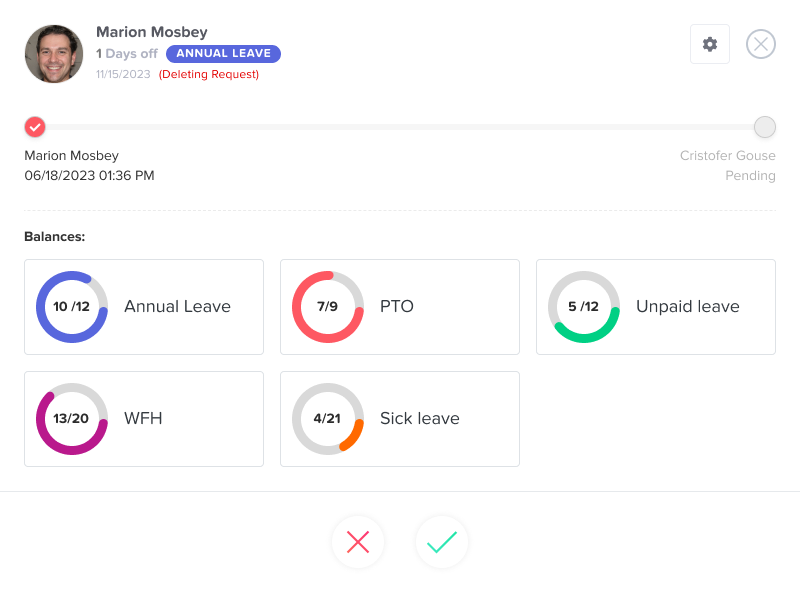In the realm of human resources management, one of the more challenging situations to navigate is dealing with “No Call No Show” (NCNS) incidents. These situations, where an employee fails to report to work without any prior notification or justification, can disrupt workflow, affect team morale, and raise legal and policy questions. This article aims to provide a comprehensive guide on how to address unexcused absenteeism effectively and fairly.
Understanding ‘No Call No Show’
Before delving into policies and procedures, it’s important to understand what constitutes a NCNS. Typically, it refers to an employee who does not show up for their scheduled shift or takes a day off and fails to notify their supervisor or HR department. These incidents can be one-offs or part of a pattern of behavior.
The Impact on the Workplace
The absence of an employee without notice can lead to several immediate challenges:
- Operational Disruption: Workflows may be interrupted, affecting productivity and deadlines.
- Team Morale: Other employees may feel burdened with additional responsibilities, which can lead to resentment.
- Client Relations: In roles directly tied to customer service, absenteeism can affect client satisfaction and business reputation.
Developing a ‘No Call No Show’ Policy
A well-defined NCNS policy is crucial for managing these situations. Such a policy should cover:
- Definition and Scope: Clearly define what constitutes a NCNS incident.
- Reporting Procedure: Outline the process for reporting absences and the preferred communication channels.
- Consequences: Specify the disciplinary actions that follow NCNS incidents, considering the frequency and patterns of the behavior.
Example of a Policy Statement
Our company considers an employee absent without leave if they fail to report to work and do not inform their supervisor within [specified time frame]. Such incidents will trigger [disciplinary actions], including written warnings, suspension, or possible termination, depending on the circumstances and frequency of occurrences.
Legal Considerations
It’s important to align your NCNS policy with employment laws:
- Fair Labor Standards Act (FLSA): Ensure the policy doesn’t inadvertently violate wage and hour laws.
- Americans with Disabilities Act (ADA): Consider potential disability-related reasons for absenteeism.
- Family and Medical Leave Act (FMLA): Recognize the legal rights of employees to take leave under certain circumstances.
Implementing the Policy
Effective implementation involves:
- Communication: Ensure all employees are aware of the policy and understand its implications.
- Training: Managers and supervisors should be trained on how to handle NCNS situations.
- Consistency: Apply the policy uniformly to avoid perceptions of unfair treatment.
Managing a ‘No Call No Show’ Incident
When an incident occurs, the following steps are advisable:
- Attempt to Contact the Employee: Try reaching out to understand the reason for their absence.
- Document Everything: Keep records of the absence, communication attempts, and any subsequent actions.
- Assess the Situation: Consider the employee’s history and any extenuating circumstances.
- Take Appropriate Action: Depending on the situation, this could range from a warning to termination.
Dealing with ‘No Call No Show’ (NCNS) incidents is a common challenge for managers in various industries. These examples illustrate typical NCNS situations and recommended approaches for managers:
Example 1: First-time Offense
Situation: An employee with a good record fails to show up for their shift without any prior notice. This is their first NCNS incident.
Manager’s Approach:
- Attempt to Contact: The manager should first attempt to contact the employee to ensure their safety and understand the reason for their absence.
- Documentation: Document the absence and any communication attempts.
- Follow-up Meeting: Once the employee returns, schedule a meeting to discuss the incident and remind them of the NCNS policy.
- Issue a Warning: If no legitimate reason is provided, issue a formal warning as per the company’s policy, and document this in the employee’s file.
Example 2: Repeated Offenses
Situation: An employee has multiple unexcused absences over several months, each followed by vague or non-credible excuses.
Manager’s Approach:
- Review Past Records: Assess the frequency and pattern of the absences and any prior disciplinary actions taken.
- Formal Meeting: Conduct a formal meeting with the employee, possibly involving HR, to discuss the pattern of absenteeism.
- Enforce Disciplinary Actions: Implement disciplinary actions as outlined in the company policy, which could include suspension or steps towards termination.
- Document All Steps: Keep detailed records of all meetings, communications, and actions taken.
Example 3: Potential Legal or Medical Concerns
Situation: An employee with a known medical condition fails to show up and does not call in.
Manager’s Approach:
- Immediate Contact Efforts: Prioritize confirming the employee’s safety and wellbeing.
- Sensitive Handling: On their return, discuss the absence sensitively, considering their medical condition.
- Consult HR and Legal: Before taking any disciplinary action, consult with HR and possibly legal counsel to ensure compliance with laws like the Americans with Disabilities Act (ADA) or Family and Medical Leave Act (FMLA).
- Reasonable Accommodations: If the absence is related to their medical condition, discuss any needed accommodations.
Example 4: Possible Misunderstanding
Situation: An employee claims they informed a colleague about their absence, but the message was not passed on to the manager.
Manager’s Approach:
- Investigate the Claim: Confirm the details with the mentioned colleague and review any written communication provided by the employee.
- Clarify Procedures: If the claim is true, remind the employee of the proper procedure for reporting absences.
- Address Internal Communication Issues: If the colleague failed to pass on the message, discuss the importance of reliable communication with them.
- Document the Incident: Keep a record of the findings and any corrective actions taken.
In each of these scenarios, the key for managers is to balance firmness and fairness. Ensuring open communication, following established procedures, and documenting each step are essential practices. Managers should also be aware of and sensitive to any personal or legal issues that might impact the situation. Regular training and updates on company policies regarding absenteeism can equip managers to handle these situations effectively and legally.
Frequently Asked Questions (FAQ) on ‘No Call No Show’ (NCNS) Policies
What qualifies as a ‘No Call No Show’ incident?
A ‘No Call No Show’ (NCNS) incident occurs when an employee fails to report for a scheduled shift and does not notify their supervisor or HR department before or during their scheduled work hours. Generally, any unreported and unexplained absence within a defined time frame (as outlined in company policy) qualifies as NCNS.
How many ‘No Call No Show’ incidents can lead to termination?
The number of NCNS incidents that lead to termination varies depending on the company’s attendance policy. Many organizations apply a “three-strike” rule, for example, termination may occur after three NCNS incidents within a 12-month period. However, some companies may take disciplinary action, including termination, after even one NCNS if it causes severe disruption or violates critical safety or service standards.
What should a manager do immediately after discovering a ‘No Call No Show’?
The manager should:
-
Attempt to contact the employee via phone, email, or text.
-
Check whether any emergency or medical situations could be involved.
-
Notify HR about the incident and begin documentation.
-
Record all attempts to contact the employee.
-
Await further communication before determining disciplinary action.
Documentation and consistency are key to ensuring fairness and legal protection.
What if an employee later provides a valid reason for their absence?
If the employee can provide credible proof of a legitimate reason, such as a medical emergency, accident, or unexpected personal crisis, management should review the circumstances compassionately. Depending on the explanation and documentation provided (e.g., doctor’s note, hospital records), the incident may be reclassified as an approved absence rather than NCNS. Each case should be evaluated individually and in line with HR policy.
How should HR handle a ‘No Call No Show’ related to a medical emergency?
If the absence was due to a verified medical emergency:
-
HR should document the medical justification.
-
The incident should not be treated as misconduct.
-
The company may need to explore accommodations under the Americans with Disabilities Act (ADA) or leave entitlements under the Family and Medical Leave Act (FMLA).
HR should approach these cases with sensitivity and legal awareness.
Can a ‘No Call No Show’ ever be excused?
Yes. While the default assumption is that a NCNS violates attendance policy, it can be excused if:
-
The employee was incapacitated or hospitalized.
-
There was a genuine emergency preventing communication.
-
Technical issues (e.g., power outage, phone malfunction) made reporting impossible.
Supporting documentation is required to verify the claim.
How can companies prevent ‘No Call No Show’ incidents?
Prevention begins with proactive communication and engagement. Effective strategies include:
-
Clear attendance and communication policies.
-
Regular reminders of reporting procedures.
-
Open channels for employees to discuss scheduling conflicts or personal issues.
-
Manager training on empathy and early intervention.
-
Attendance incentives or recognition programs.
A transparent culture often reduces unreported absences.
What is the difference between a ‘No Call No Show’ and unplanned absenteeism?
Unplanned absenteeism refers to absences that occur without prior scheduling but with proper notice, for instance, calling in sick an hour before a shift. A ‘No Call No Show’ occurs without any notice or communication, making it a more serious violation of company policy.
Should the same policy apply to remote employees?
Yes, but with minor adjustments. Remote or hybrid employees must still notify their supervisors if they cannot work as scheduled. However, since physical presence isn’t required, NCNS for remote employees typically refers to missing mandatory meetings, failing to log in, or not submitting work without explanation. Policies should clarify expectations for remote attendance and communication.
How should HR document a ‘No Call No Show’ incident?
Each NCNS incident should be documented in the employee’s personnel file, including:
-
Date and time of the missed shift.
-
Attempts made to contact the employee.
-
Any response or explanation received.
-
Actions taken (warning, suspension, etc.).
-
Supporting documents (emails, call logs, HR notes).
Proper documentation ensures transparency and protects the company during potential disputes.
What role does consistency play in enforcing NCNS policies?
Consistency is critical. Applying the policy uniformly to all employees helps prevent claims of discrimination or favoritism. HR should ensure that all disciplinary actions for NCNS incidents follow the same structure, regardless of position, tenure, or personal relationship, unless legal or medical exceptions apply.
How should managers communicate disciplinary actions after a ‘No Call No Show’?
When addressing the employee:
-
Conduct a private meeting with HR present.
-
Present documented facts clearly and calmly.
-
Allow the employee to explain or provide context.
-
Discuss the consequences as per policy.
-
Document the meeting and any corrective actions agreed upon.
Maintaining professionalism and empathy helps preserve dignity while reinforcing accountability.
Are there legal risks in terminating an employee for ‘No Call No Show’?
Yes. Employers must ensure that:
-
The termination complies with company policy.
-
There’s documented evidence of the incident.
-
Legal protections (such as ADA or FMLA) are not violated.
Consulting HR or legal counsel before termination is recommended to avoid wrongful termination claims.
Can ‘No Call No Show’ incidents affect final pay or benefits?
In most cases, NCNS does not affect the employee’s right to receive earned wages. However, benefits such as bonuses, attendance incentives, or accrued paid time off may be impacted depending on policy. If the NCNS leads to termination, the payout of benefits should follow applicable laws and company procedures.
What should be included in a company’s official ‘No Call No Show’ policy document?
An effective NCNS policy should include:
-
A clear definition of what constitutes NCNS.
-
The timeframe within which employees must report absences.
-
Reporting methods (phone, email, HR system, etc.).
-
Disciplinary procedures for violations.
-
Legal and medical considerations (ADA, FMLA, etc.).
-
Steps for reinstatement or appeal (if applicable).
Regularly reviewing and updating the policy ensures it remains compliant with employment laws and industry standards.
How can managers support employees returning after a ‘No Call No Show’?
Managers can:
-
Conduct a return-to-work meeting.
-
Discuss the incident constructively.
-
Reaffirm attendance expectations.
-
Offer support or resources if personal issues contributed to the absence.
-
Document the discussion and any agreed corrective actions.
This approach promotes accountability while helping the employee re-engage positively with the team.
What’s the best way to communicate NCNS policies to employees?
To ensure full understanding:
-
Include the policy in the employee handbook.
-
Review it during onboarding and training sessions.
-
Post reminders in shared communication channels.
-
Periodically refresh awareness during team meetings or HR updates.
Regular communication ensures that employees know the consequences and procedures clearly.
Can an employee dispute a ‘No Call No Show’ record?
Yes. Employees have the right to dispute if they believe the NCNS designation was made in error. They should provide supporting evidence such as email logs, call records, or witness statements. HR should review the dispute objectively and document the resolution process.
What if an employee’s emergency contact reports their absence?
If a family member or emergency contact notifies the company, it should still be documented. The company should:
-
Confirm the employee’s condition and expected return.
-
Temporarily suspend disciplinary action until details are verified.
This demonstrates compassion and ensures the company acts responsibly during genuine emergencies.
Should NCNS incidents be discussed during performance reviews?
Yes, if attendance and reliability are key performance metrics. Repeated NCNS incidents may indicate underlying issues such as burnout, disengagement, or personal challenges. Addressing these during performance reviews provides an opportunity to offer coaching, support, or corrective action plans.
Conclusion
Handling ‘No Call No Show’ incidents requires a balanced approach that protects both the company’s interests and respects employees’ rights. By establishing a clear policy, training managers, and ensuring legal compliance, HR professionals can effectively manage these challenging situations while maintaining a fair and productive workplace environment.


